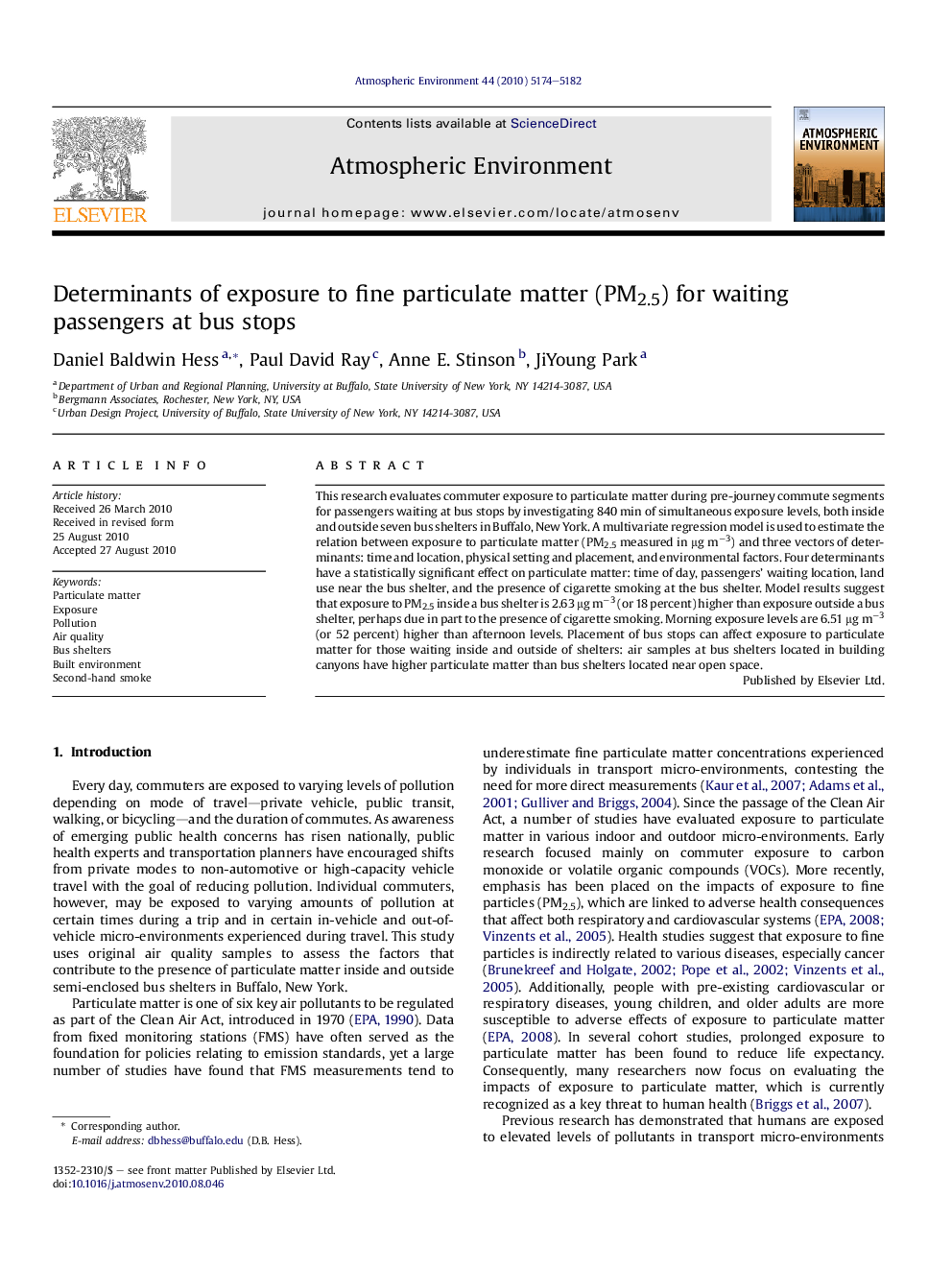| Article ID | Journal | Published Year | Pages | File Type |
|---|---|---|---|---|
| 4440466 | Atmospheric Environment | 2010 | 9 Pages |
This research evaluates commuter exposure to particulate matter during pre-journey commute segments for passengers waiting at bus stops by investigating 840 min of simultaneous exposure levels, both inside and outside seven bus shelters in Buffalo, New York. A multivariate regression model is used to estimate the relation between exposure to particulate matter (PM2.5 measured in μg m−3) and three vectors of determinants: time and location, physical setting and placement, and environmental factors. Four determinants have a statistically significant effect on particulate matter: time of day, passengers’ waiting location, land use near the bus shelter, and the presence of cigarette smoking at the bus shelter. Model results suggest that exposure to PM2.5 inside a bus shelter is 2.63 μg m−3 (or 18 percent) higher than exposure outside a bus shelter, perhaps due in part to the presence of cigarette smoking. Morning exposure levels are 6.51 μg m−3 (or 52 percent) higher than afternoon levels. Placement of bus stops can affect exposure to particulate matter for those waiting inside and outside of shelters: air samples at bus shelters located in building canyons have higher particulate matter than bus shelters located near open space.
